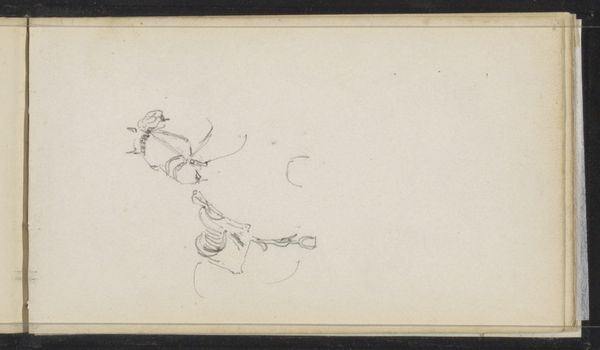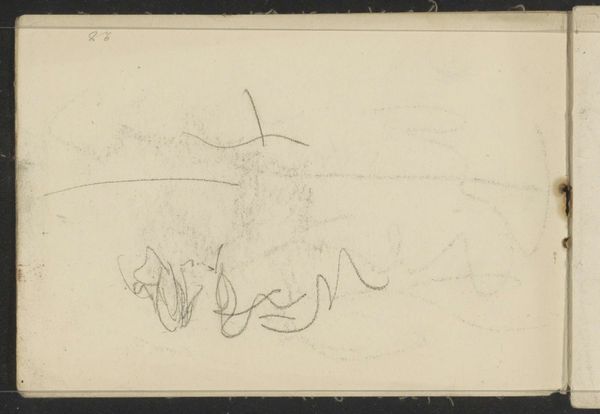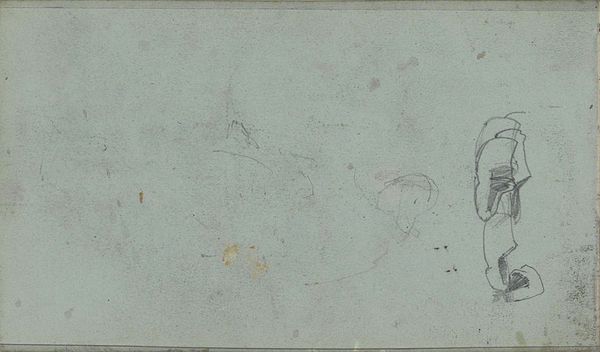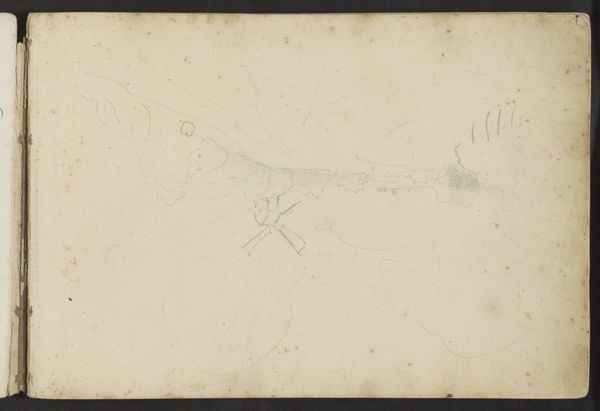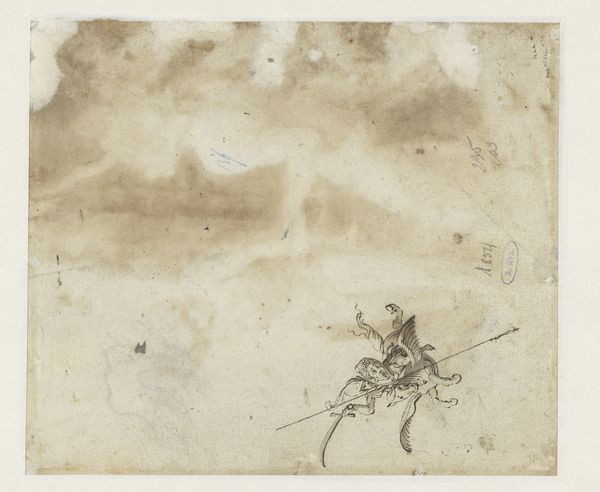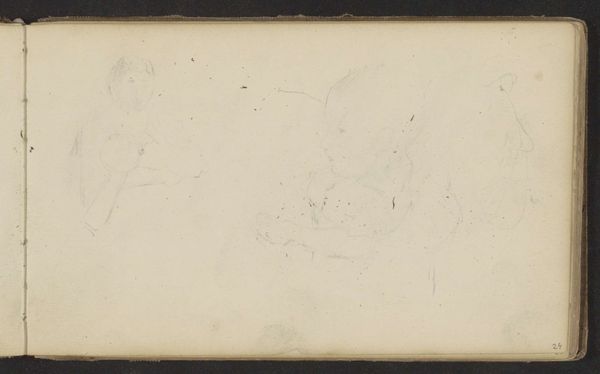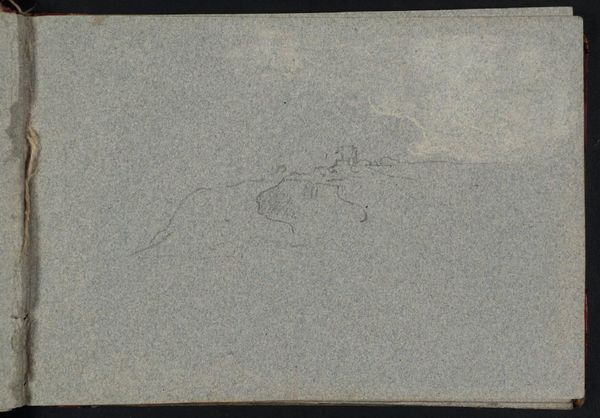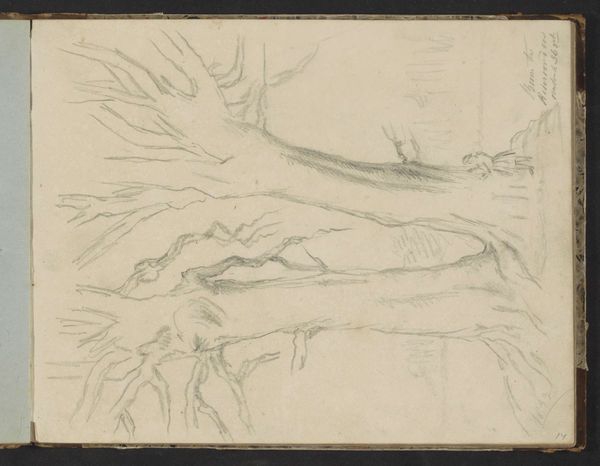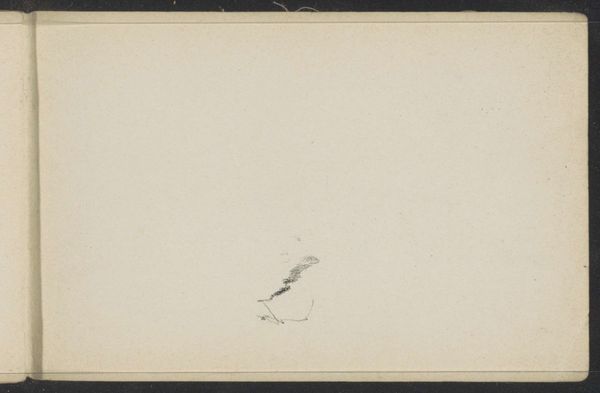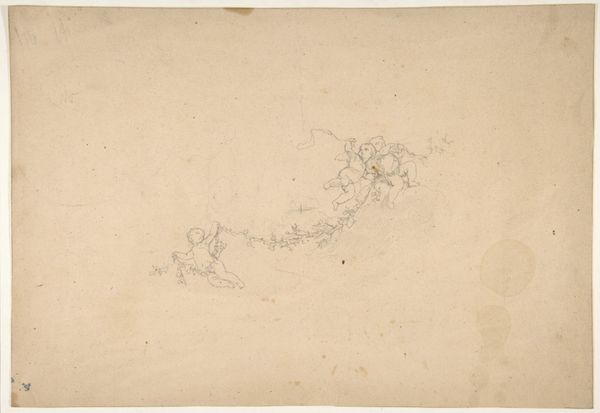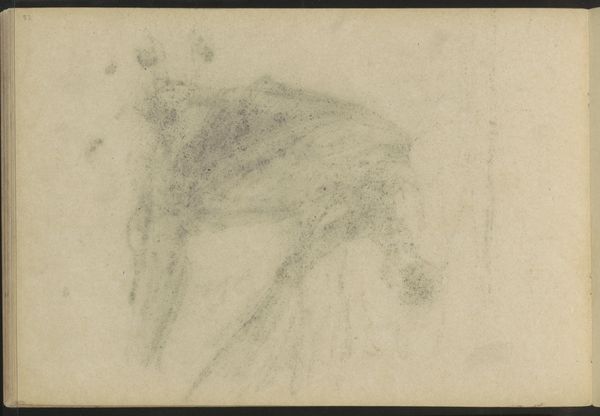
drawing, paper, ink
#
drawing
#
aged paper
#
toned paper
#
homemade paper
#
sketch book
#
hand drawn type
#
paper
#
personal sketchbook
#
ink
#
hand-drawn typeface
#
fading type
#
abstraction
#
sketchbook drawing
#
sketchbook art
Copyright: Rijks Museum: Open Domain
Editor: Here we have Isaac Israels' "Studie, mogelijk van een vrouw met opgeheven arm," created sometime between 1875 and 1934. It's an ink drawing on paper, seemingly torn from a sketchbook. There's a sort of haunting quality to the abstract figure... what's your read on it? Curator: The initial impression is, indeed, one of something fleeting, almost ephemeral. But what interests me most is the tangible quality of the materials themselves: the paper's visible age and toning, the ink's fluidity, even the likely mass-produced nature of the sketchbook itself. How do these humble, readily available materials contribute to our understanding of the artist's process? Editor: That's a great point. You see how the materials, even their "ordinariness," plays a significant role. I hadn't considered the sketchbook as a commodity. Does that downplay its status as fine art? Curator: Not at all. Instead, it democratizes the artistic process. This wasn't a precious canvas acquired from an exclusive supplier, but a simple notebook, likely filled with numerous sketches, ideas, and experiments. We are looking at a mass produced notebook where he uses ink; a commodity and readily available tool, allowing Israels to explore his subject. Does this make the subject – the possible woman – also ordinary, mass producible? Editor: Potentially. Maybe this sketch is less about idealized beauty and more about capturing an everyday moment with simple tools. Curator: Precisely. And consider the labor involved – both the artist's hand in creating the sketch and the unseen hands that manufactured the paper and ink. The means of production are intrinsically linked to the final artwork. The commercial trade in sketchbooks helped enable the freedom of artists to study figure or landscape rapidly. Editor: This has completely shifted my perspective. I was so focused on the figure; I wasn't thinking about the social context of art supplies! I’ll definitely look at materials differently moving forward. Curator: That's the essence of a materialist approach. It reminds us that art is never created in a vacuum. Thank you.
Comments
No comments
Be the first to comment and join the conversation on the ultimate creative platform.
